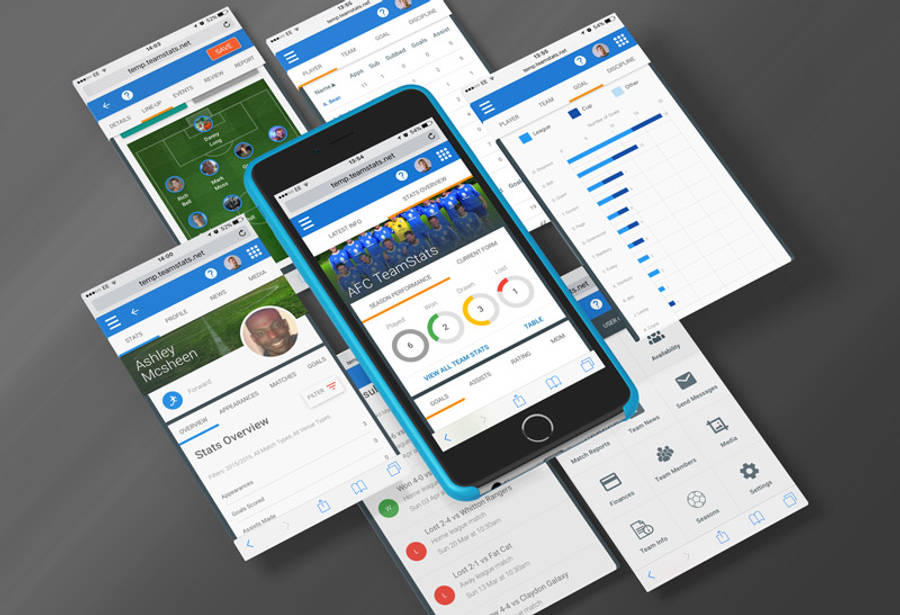Football enthusiasts increasingly use player statistics to gain a competitive edge. By analysing detailed data, teams can refine strategies and enhance performance. This article examines how leveraging statistics can transform both team tactics and decision-making.
Understanding player statistics is crucial for any football strategy. As teams look to gain an advantage on the field, they rely on data-driven insights to inform their decisions. Incorporating statistical analysis into football strategies allows coaches and managers to make more informed decisions, improving team performance and enhancing game plans. Platforms that provide statistical insights play a significant role in helping sports enthusiasts understand these statistics for better decision-making. For those interested in exploring more about how statistics can enhance football strategies, betbrothers.uk offers valuable resources and insights.
The Importance of Player Statistics in Football
Player statistics are the backbone of modern football strategy. These metrics offer insights into a player's performance, from goals scored to successful tackles made. Understanding these figures helps evaluate both individual and team potential, which is essential for forming effective game plans. Metrics like assists, tackles, and passes provide a clear picture of a player's contribution on the field.
In-depth analysis of these statistics can reveal patterns in player behavior and performance trends over time. Analysing goal-scoring patterns can help identify a player's peak performance periods or highlight areas needing improvement. By leveraging this data, coaches can tailor training programs to enhance specific skills or rectify weaknesses.
Teams also use these statistics to scout potential talent. By comparing statistical profiles, they can identify players who fit their strategic needs. This data-driven approach ensures that recruitment is based not only on observation but also on empirical evidence, reducing the risk of costly transfer mistakes.
Advanced metrics like progressive passes, and pressure regains have revolutionised how teams evaluate player performance. These sophisticated statistics go beyond traditional metrics to provide deeper insights into a player's true impact on the game. For instance, xG helps teams understand the quality of scoring chances created, while pressure metrics reveal off-ball contributions that might otherwise go unnoticed. This evolution in statistical analysis has enabled teams to identify undervalued players and optimise their tactical approaches based on more comprehensive performance data.
Utilising Platforms for Comprehensive Data Collection
Platforms that provide statistical tools are indispensable for gathering and analysing player statistics. These platforms offer real-time tracking and historical data analysis, enabling teams to access a wealth of information at their fingertips. Features such as live updates and in-depth analytics help managers make informed strategic decisions.
Such tools allow for granular analysis of player performance across various metrics, which is crucial for strategy development. Coaches can track players' progress over time, making it easier to adapt training regimens and match tactics accordingly. The availability of comprehensive data sets also aids in predicting future performance trends.
Additionally, exploring articles like betbrothers.uk can provide further insights into the shared values of sports and strategic decision-making. By conducting thorough research, you can develop a view point which will lead to better informed decisions from a position of authority. Possessing key details is imperative in order to make educated choices around your playing squad and the overall team on matchday.
What's more, these platforms support collaboration among coaching staff by offering insights that can be shared and discussed during strategy meetings. By integrating statistical tools into their daily operations, teams can maintain a competitive edge by constantly refining their approach based on solid data.
Modern statistical platforms have also incorporated machine learning algorithms and artificial intelligence to provide predictive analytics. These advanced systems can forecast player fatigue levels, injury risks and potential performance peaks based on historical data patterns. This predictive capability allows teams to make proactive decisions about player rotation, training intensity and match preparation, ultimately helping to maintain peak performance while minimising the risk of player burnout or injury.
Incorporating Statistical Insights into Tactical Strategies
Statistical insights are increasingly integral to developing effective football strategies. By analysing data, teams can optimise player positioning during matches or decide on the best times for substitutions. Statistics provide a basis for tactical adjustments that can influence game outcomes significantly.
For example, if a player consistently excels in certain conditions, teams might adjust their lineup or formation to exploit this advantage during matches. The ability to adapt strategies based on statistical evidence ensures that teams remain agile and responsive during games.
This approach also fosters innovation in training methods as coaches use data to simulate match scenarios during practice sessions. By aligning training objectives with statistical findings, teams can prepare more effectively for upcoming challenges and enhance overall performance.
Applying Player Statistics for Informed Decisions
Sports enthusiasts can leverage player statistics to make informed decisions without directly relying on specific platforms. By understanding key metrics such as form and match conditions, individuals gain valuable insights that can enhance their predictions.
Evaluating current player form using statistical data helps predict likely outcomes more accurately. This analytical approach allows enthusiasts to identify favorable opportunities by recognising patterns that casual observers might miss.
The relationship between statistical analysis and decision-making strategies extends beyond basic predictions; it involves understanding deeper trends within the sport. By combining historical data with current performance metrics, individuals create robust models that inform their choices effectively.


















